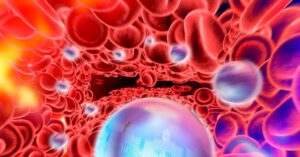
Landfill sites, traditionally seen as repositories for discarded electronics, plastic bottles, and organic waste, are now being reimagined as potential gold mines for future technologies. Researchers are exploring innovative methods to convert today’s trash into tomorrow’s technology by upcycling waste streams into valuable nanomaterials such as graphene, carbon dots, and metal nanoparticles. This approach addresses both the growing issue of waste and the resource-heavy production of nanomaterials.
The emerging field of waste-derived nanotechnology combines sustainable practices with advances in nanotechnology, turning environmental challenges into useful technological resources. This development follows a growing recognition of the need for more sustainable and resource-efficient production methods.
Plastic Waste: From Pollution to High-Performance Nanomaterials
Plastic waste constitutes approximately 12% of global solid waste, making it a prime target for transformation due to its abundance and high carbon content. Scientists have been investigating the conversion of plastic waste into advanced carbon nanomaterials. Recent studies have demonstrated how polyethylene terephthalate (PET) bottles can be transformed into carbon nanotubes through catalytic pyrolysis, a process that heats plastics without oxygen.
The results of this conversion are remarkable. Carbon nanotubes produced from PET waste exhibit notable electrical conductivity and mechanical strength, making them suitable for use in energy storage devices and sensor technologies. A recent article in Polymers reported a remarkable conversion efficiency to carbon nanotubes using a nickel-based catalyst, with properties comparable to those made from fossil hydrocarbons.
Another innovative technique is flash joule heating, which vaporizes plastics into graphene through a brief but intense electric pulse. This method is energy-efficient, scalable, and avoids the need for toxic solvents. Scientists have already used this method to produce graphene for enhanced concrete conductivity and as a component in battery anodes.
Plastics can also be upcycled into carbon dots, nanoparticles smaller than ten nanometers with adjustable fluorescence. Using hydrothermal processing, polyolefin plastics can produce carbon dots effective in detecting environmental pollutants such as heavy metals. These carbon dots also show potential for use in agricultural sensors to monitor soil health without introducing toxic residues.
Researchers have even found a way to recycle some of the estimated 950 billion polypropylene face masks discarded during the pandemic. Published in Nano-Micro Letters, the study processed the masks and incorporated them with graphene, transforming them into high-performance thermally conductive nanocomposites. The resulting material exhibited a thermal conductivity of 87 W m-1 K-1 and provided electromagnetic shielding of 88 dB, suitable for electronic applications.
E-Waste: Unlocking Precious Metals and Rare Elements
While rubbish can be converted into nanomaterials, nanomaterials can also be used to convert waste into useful materials. As technology evolves, old electronics are frequently discarded in favor of the latest smartphones and laptops, contributing to electronic waste becoming the fastest-growing waste stream globally, generating over 53 million metric tons in 2023. These discarded devices contain valuable metals such as gold, silver, and palladium.
Efforts to retrieve these metals have traditionally involved energy-intensive smelting or hazardous acid leaching. However, recent reports have demonstrated the use of nanotechnology to extract metals from circuit boards more cleanly. One successful approach involves using engineered nanoscale ligands designed to selectively bind with target metals, extracting gold from circuit boards at a purity level of 99%. This process is less toxic than cyanide leaching and helps recover valuable materials while minimizing the need for mining.
Researchers are also finding ways to recover rare earth elements like neodymium from hard drive magnets. Used in electric car motors and wind turbine generators, these materials can be recovered using nanoporous membranes, which filter different materials via size exclusion and affinity-based filtration. By reclaiming them from electronic waste, nanotechnology helps conserve finite resources and reduce the environmental impact of traditional extraction methods.
Biomass and Food Waste: Nature’s Nanofactories
Organic waste streams are equally promising for nanomaterial production. Rice husks and banana peels, rich in silica, cellulose, and lignin, can be processed into nanoparticles. For instance, silica nanoparticles from rice husks can adsorb heavy metals and dyes from wastewater with efficiencies above 90%. Their porous structure and biocompatibility make them safer alternatives to synthetic adsorbents.
A recent study published in the International Journal of Molecular Sciences demonstrated that onion skins and coffee grounds can be transformed into carbon quantum dots through solvothermal processing. These dots have multiple applications, such as nano-sensors for pesticides, changing color upon detecting contaminants, or in medical applications where their low toxicity makes them suitable for bioimaging.
Even seafood shells can be processed into chitosan nanoparticles, which are biodegradable and capable of delivering drugs across cell barriers.
Challenges and Future Pathways
Despite its promise, waste-derived nanotechnology faces several challenges. Many current production methods are costly and difficult to scale. Processing mixed waste streams requires new infrastructure, and there are concerns about the toxicity of nanowaste. Could particles left over from production or released during use accumulate in the environment? Life-cycle assessments are needed to fully understand their environmental impact. Without careful management, these materials could introduce new ecological risks, such as bioaccumulation in aquatic habitats.
Future work is increasingly focused on circular design principles. One approach involves integrating artificial intelligence (AI) to enhance the sorting and processing of waste materials. Another direction being investigated is the development of self-degrading nanomaterials that can break down safely after their intended use. Supporting policies that encourage urban mining can help view landfills as resources rather than just disposal sites.
International initiatives are helping to set standards. The UN Global Plastic Treaty and the Sustainable Nanotechnology Organization (N4SNano) aim to standardize safety protocols while promoting the beneficial aspects of nanotechnology. Initiatives like these are vital for ensuring their alignment with Sustainable Development Goals.
The idea of mining landfills for nanomaterials may have sounded fanciful a decade ago, but it is now taking shape in laboratories worldwide. Plastic bottles can become nanotubes, broken smartphones can yield rare metals, and banana peels can power sensors. While the field is still developing, the hope is that one day the world’s rubbish heaps won’t be endpoints for materials but sources of advanced materials.




